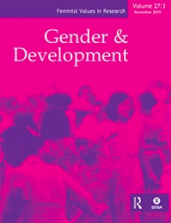The 2030 Agenda: challenges of implementation to attain gender equality and women’s rights

Overview
Moving beyond the narrow goals and targets of the Millennium Development Goals (MDGs) and the top-down manner in which they were defined, the 2030 Agenda promises to address many of their shortcomings. Not only has the process of defining the new agenda been more inclusive and its scope a universal one, but it is also anchored in human rights principles, while its goals and targets draw attention to a far more variegated set of structural concerns.
This is evident in the remarkably broad scope of the targets under the gender-specific Goal 5. But the Sustainable Development Goals (SDGs), like the MDGs, are somewhat silent on the policies needed to achieve the goals and targets. When it comes to the gender-specific elements, while the SDGs do a far better job than the MDGs in drawing attention to key structural constraints that hold back women’s enjoyment of their rights, on some of the more contested issues they hardly advance the agenda beyond what has been the agreed language for decades.
At the same time, the hard-won gains and vision of the SDGs, including SDG 5, may be difficult to realise unless the dominant economic model that forms the backdrop is changed, and stronger accountability mechanisms are put in place. In the absence of robust accountability mechanisms, the risk of dilution and selectivity in the process of implementation looms large.
This article is hosted by our co-publisher Taylor & Francis. For the full table of contents for this and previous issues of this journal, please visit the Gender and Development website.
Additional details
Author(s)
How to cite this resource
Citation styles vary so we recommend you check what is appropriate for your context. You may choose to cite Oxfam resources as follows:
Author(s)/Editor(s). (Year of publication). Title and sub-title. Place of publication: name of publisher. DOI (where available). URL
Our FAQs page has some examples of this approach.



